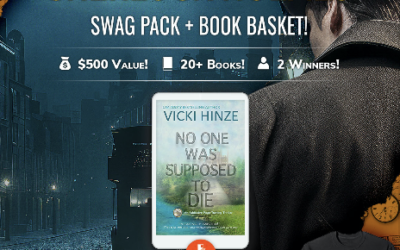Vicki Hinze © 2003-2011
(Blog Post)
This brief glossary of terms, from the reference point of fiction types, hopefully will aid in defining what you’re writing and help familiarize you with common terms:
Genre is a means of classifying novels both for the purposes of novel construction and marketing.
Examples: romance, adventure, horror, western, mystery, suspense.
In a genre novel, the focus of the novel is directed on its specific genre. Romance novels focus on the developing relationship between the male and female protagonists–the hero and heroine. Mystery novels focus on the mystery. All novel elements center on advancing the plot with respect to the novel’s genre.
Series novels are those in which a publisher typically publishes a set number on a regular basis.
Example: (romance.) Silhouette publishes six Special Edition novels each and every month. These are commonly called category novels.
Series can also mean a group of related novels (single-title or category) done by the same author(s), or a group of related books which were done by different authors wherein all the novels contain some similarities such as setting (all novels take place in the same town), or recurring characters (characters appear and reappear in subsequent novels). The Seascape series I Co-Created is an example of the latter type series. All the novels are related by character, setting, and various other means, but each novel stands alone.
A type of novel such as Silhouette’s Special Edition, Romance, Intimate Moments, Desire; Harlequin’s Superromance, Temptation, American, Blaze, Red Dress.
Other genres, including Fantasy, Mystery, Adventure, etc., also have category novels.
Sometimes referred to as series novels, category novels are published in a set number on a regular basis. There are specific guidelines for these novels, and those guidelines can be had by sending an self-addressed, stamped envelope and your request for a copy to the publisher. Category novels might, or might not, have subplots. They vary in length from 50,000-85,000 words. The focus of the novels does not stray from the genre dictates, which is why obtaining guidelines prior to writing is essential. Frequently topics which are too harsh or too complex are avoided–mainly due to length dictates and reader preferences. Traditionally, these novels have a happy ending, focus (in romance) on the relationship, and have few secondary characters.
Single-title novels can still be genre novels. Still be oriented to a set, specific audience.
They different from category novels in length (typically 90,000-120,000 words), in scope (focus on genre dictates, but often include subplots, which mirror or echo the plot, and in restrictions. Some publishers offer guidelines for these novels, some don’t. Most are much less restrictive to the author than category novels, in that the characters vary according to plot needs and are seldom designated to be within certain ages. The setting, plot themes, and vehicles, are also more open to exploration by the author.
A mainstream novel is one in which no particular genre is attached to the story. It’s difficult for a new author to sell a mainstream novel because publishers must take a bigger risk.
With a single-title or category novel, the audience is defined. Distributors and booksellers know how to effectively market the book. In mainstream, the publisher forfeits those marketing assets, thus it’s important to the publisher that the author have an established base of readers. These novels are typically purchased on author identification. Everyone knows the author’s name. Mainstream novels can cover any topic in any time period and be any length. The characters and plot identify the story elements and carry the novel. Nothing is set forth for the writer in the form of guidelines. Typically, the mainstream novel has a satisfying if not a happy ending to meet reader expectations.
Literary novels are those in which the writer explores philosophical issues; ideology versus tells a story to entertain.
The literary novel might be abstract or explicit, and typically contains underlying themes of a spiritual nature. The length, tone, and content vary greatly from that in commercial fiction, which is normally set forth in a straight manner and linear in fashion. The literary novel does not insist on a happy/satisfying ending, on traditional novel construction, or on formatting. It often contains much more introspection and exposition than does a commercial fiction novel. There are exceptions, but literary novels generally sell fewer copies, thus pay less than the commercial fiction novel.
Literally, any novel written for the purpose and with the intent of publication.
Commercial fiction is the home of storytelling. The novels vary; limited only by the imaginations of the authors; and include category and series novels, single title novels, mainstream novels. Book exceptions: Non-fiction, of course, and literary novels. Length varies. The point of view, content, structure, focus, plot, characters–all novel elements–differ, depending upon the targeted market, story dictates, genre, and elements inherent to the specific novel. One thing most commercial fiction has in common is that the reader’s expectations must be met.
Translated, that means a happy or satisfying ending, where all questions raised are answered and resolved–even if the resolution is the character’s realization that there is no resolution. No loose ends. Another common bond is that commercial fiction today is generally written in an active voice. Most are written in third person point of view, though there are some first person and (fewer) second person.
Non-Fiction: True stories, or those about real things. Non-fiction incorporates everything from biographies, autobiographies, books on medicine to cook books. General topics to specific topics.




